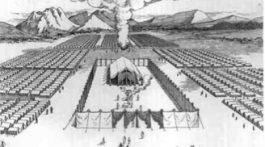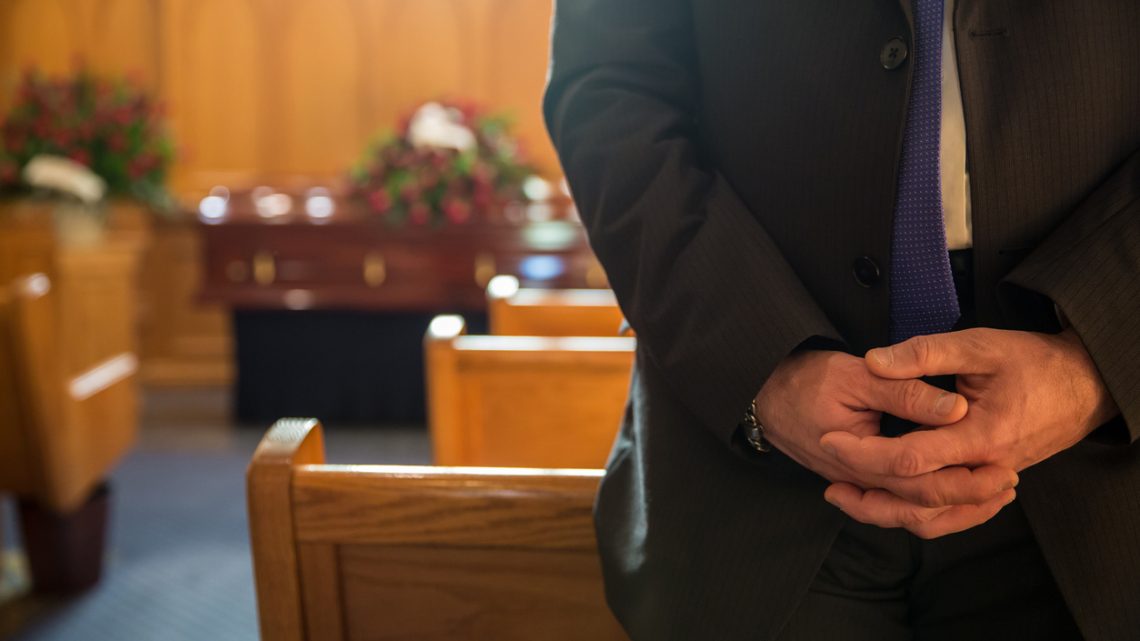Sabbath School Lesson for June 3-9, 2017
In this age of information, with the internet, social media, and 24-hour news outlets, we shouldn’t be surprised that the world of communication has become contaminated with what’s been called “fake news”. It’s difficult to know what news can be trusted. The fake journalism looks so real and convincing, many are led to believe their lies, especially when they support our preconceived ideas about the truth.
It should be no surprise that deceptive falsehoods have also found their way into communication between God and mankind. False teachers, sometimes unknowingly misled by Satan, continue to promote false doctrines in the religious world today. Peter saw this as one of the greatest threats to the church, even back in his own time in history.
- Peter’s first epistle, as we’ve learned, focused on external challenges to the church, such as the persecution caused by those outside the church.
- But his second epistle zeroes in on the inward opposition presented by those supporting heresies and immoralities. This too has the potential to tear down the church and render it much less effective.
Peter wants his flock to remain faithful by remembering that Jesus is the only way to salvation, and that His scriptures are able to keep us safe, when we use them to fortify our minds against the enemy.
Scripture Gem: “They promise them freedom, but they themselves are slaves of corruption; for people are slaves to whatever masters them.” 2 Peter 2:19 NRSV
Sin enslaves us, but only the grace of God frees us from sin. It doesn’t free us TO sin, but frees us FROM sin. One way to detect false teachers, as Peter instructs us here, is to see whether their way leads to sin, or to freedom from it.
Seeing if sin is still pronounced in the lives of false teachers and those they teach helps us identify them for who they are.
Sunday: False Prophets and Teachers
How surprising to discover the depravity and corruption of these false prophets Peter warns them about. We tend to think of the early church in idealistic terms, with every believer and doctrine being nothing but sweet and pure. But evidently they had their “snakes” to deal with back then as well.
Here’s how Peter described these false prophets. Mainly, they were…
- teaching destructive heresies (proclaiming bold lies or even subtle inaccuracies that would divide the church)
- denying God’s authority to denounce sin and Christ’s ability to save them (exhibiting covetousness and pride that would separate them from God)
We see through Peter’s eyes that doctrine does indeed matter, when it comes to our faith. What we teach and how we teach it are extremely significant for God’s flock. Our doctrinal points must be guarded from anything that might turn our eyes from the Great Shepherd.
Discussion Questions: Read 2 Peter 2:1-3. What part does covetousness play when it comes to destructive heresies? Who displays this greed or covetousness–the deceiver or the deceived?
Think about the ten commandments. What makes the first and last commandments so special? How does covetousness, the tenth one, lead to breaking all the other commandments involving our human relationships?
How does our society encourage a spirit of covetousness? What should we instead be longing for? How would a humbler, grateful attitude protect us from false teachers and prophets?
Monday: Freedom in Christ?
According to Peter, these false teachers were downplaying the role of holiness in the life of God’s followers. Although we are all at different places on the path to purity, we should all be on the same path and moving forward to our heavenly destination.
Unfortunately, the dubious doctrines of false prophets tended to lead them back into the same life of sin they were trying to leave. But God’s desire is for us to have freedom from the slavery of sin, as well as its condemnation. Sin should no longer have the same hold on us, keeping us fast in its clutches, disrupting our life totally and repeatedly.
Only through Christ can our lives have any kind of normalcy and peace. Sin may happen from time to time, and perhaps more often than we’d like. But it shouldn’t rule us. God’s throne has no room for any other rulers. We must make Him the sole ruler of our life, and not let our passions, lusts, and immorality share that throne.
Let’s not forget that Peter’s admonition not only refers to external behaviors and addictions. Much of our sin is done inside the heart–through prideful boasting, prejudices, and revengeful, unforgiving feelings. These inward signs of sin must also be overcome.
Discussion Questions: Read 2 Peter 2:18, 19. How do our sins hold us in bondage? How can we be worshiping our sin, without really wanting to or realizing it?
Read Romans 6:4-6. Why are these words so full of hope for many sinners? Even without flagrant, outward sinning, how will our lives be new after we come to Christ?
Read John 8:34-36. What’s the difference between a freed slave and a son? Why is the freedom Jesus offers so special?
Tuesday: A Dog Returns to Its Vomit
Not very pretty images–a dog returning to its vomit, or a pig wallowing in the mud. But it does match the severity and senselessness of the situation when someone returns to his or her former life of sin. How it must have disheartened Peter to see this happening to the church members he loved so much.
Of course, Peter doesn’t see these circumstances as hopeless, or he wouldn’t be making heartfelt pleas for them to return to the truths he had taught them. Countless times, Peter saw Jesus taking sinners back, forgiving them multiple times. So, we must not give up hope for people, no matter what stage of sinning they find themselves.
The church family must work together to nurture new disciples.
Discussion Questions: Read 2 Peter 2:20-22. Are people who go back to their sins hopeless?
Read 2 Peter 2:20 and Luke 11:24-26. How do these verses support each other? What kind of spirits are they and what do they do?
Read Luke 15:11-32. How does the story of the lost son help us understand God’s forgiveness?
Wednesday: Peter and Jude
The epistle of Jude, a brother of Jesus, so closely follows the message of Peter’s second epistle that historians have thought they either borrowed from each other’s writings, or they both had a third source from which to draw their conclusions and make their points.
No matter which theory is correct, the unmistakable truth is that the call to shun false teachers and prophets is undoubtedly an important issue for the church. Satan has tried multiple ways to discredit God’s word. The church has been assaulted at various times with incorrect doctrines leading to…
- legalistic requirements in order to “earn” our salvation,
- cheap grace that requires no sacrifice on our part,
- fabricated lies about both the First and Second Coming of Jesus,
- so-called healings and other supernatural feats that lead to spiritualism, and
- the materialistic nature of modern “prosperity gospel” preachers.
Peter and Jude both saw the onslaught of these dangers that have threatened the very heart of Christianity throughout the ages, leaving God’s church weak and ineffective. Their plea is for God’s people to fortify their minds with the Scriptures and beware of “wolves in sheep’s clothing”, dangers inside the church.
Discussion Questions: Read 2 Peter 3:2-4, Jude 17, 18, Matthew 24:48, and Ezekiel 12:22. How do these verses all share the same idea? Could the words of Ezekiel and Jesus have influenced the writings of Peter and Jude?
Read 2 Peter 2:1, 10, 18, 19 and Jude 4, 8, 10. What kind of false teachers are both writers seeing here? Why are some of these characteristics hard to identify, especially at first?
Read 2 Peter 2:9, 17 and Jude 6. What is the ultimate fate of these false teachers?
Thursday: More Old Testament Lessons
2 Peter 2:10 helps us identify three ways to recognize false teachers: They…
- “walk according to the flesh in the lust of uncleanness”
- “despise authority.”
- “are presumptuous, self-willed.”
This chapter also includes three examples of those who have already received punishment for their corrupt ways:
- the angels who were kicked out of heaven with Satan (v. 4)
- the world that was destroyed by the flood (v. 5)
- Sodom and Gomorrah (v. 6-8)
Peter wants us to understand that God has planned an end to all those who are intent on following Satan. Their fate is sealed and permanent. They will no longer be able to deceive and corrupt others in such blatant, despicable ways.
Balaam was another Old Testament example Peter cited in chapter two (v. 15-17). Balaam was a prophet who had forsaken God. He yielded to covetousness and pride by agreeing to curse the Israelites, when urged to by a pagan king. Of course, we know the story of how God used Balaam’s donkey to rebuke him and thwart his mad scheme. This unusual intervention saved the Israelites, when Balaam arrived at their camp and Balaam blessed them instead.
Discussion Questions: Read 2 Peter 2:4-6. How were sinners in these examples given chances to repent, and how complete was their punishment? In what way was their destruction a merciful act by God?
Read 2 Peter 2:9 and Psalm 34:15-19. What message is Peter trying to convey in this verse?
Read 2 Peter 2:17. How does this description of wells without water, or clouds carried by a tempest, accurately fit the profile of false teachers?
Summary
Sunday: False Prophets and Teachers
False prophets were…
- teaching destructive heresies (proclaiming bold lies or even subtle inaccuracies that would divide the church)
- denying God’s authority to denounce sin and Christ’s ability to save them (exhibiting covetousness and pride that would separate them from God)
Monday: Freedom in Christ?
Doctrines of false prophets tended to lead them back into the same life of sin they were trying to leave.
Tuesday: A Dog Returns to Its Vomit
Giving new believers opportunities to substitute church involvement and service for their former, secular activities will help steer them away from the behaviors they are trying to replace.
Wednesday: Peter and Jude
The epistle of Jude, a brother of Jesus, so closely follows the message of Peter’s second epistle that historians have thought they either borrowed from each other’s writings, or they both had a third source from which to draw their conclusions and make their points.
Thursday: More Old Testament Lessons
Those who have already received punishment for their corrupt ways:
- the angels who were kicked out of heaven with Satan (v. 4)
- the world that was destroyed by the flood (v. 5)
- Sodom and Gomorrah (v. 6-8)
Embracing the Message
In order to recognize counterfeit money or art, the experts become so familiar with the real thing, that the counterfeit reveals itself with ease. This can also be the case when it comes to religious counterfeits. Knowing the Bible isn’t even enough though. We must know its Author. If Jesus Christ is our constant companion, the one we spend the most time with, then we will be able to identify those who don’t represent Him faithfully.
What incorrect teachings have led to…
- legalistic requirements in order to “earn” our salvation, (salvation by works?)
- cheap grace (“once saved, always saved”?)
- misconceptions about both the First and Second Coming of Jesus, (secret rapture?)
- spiritualism, (“slaying in the spirit”, speaking in tongues, New Age philosphies?)
What qualities of Jesus help us recognize these falsehoods for what they are?
Next Week: The Day of the Lord, Lesson 12
To read the Sabbath School Lesson Quarterly or see more resources for its study, go to https://www.absg.adventist.org/
All Outlook blogposts by Teresa Thompson, are at http://outlookmag.org/author/teresathompson/









